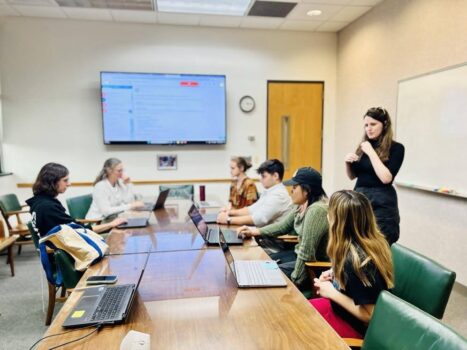A recent KBase community highlight summarized research accomplishments from Jennifer Goff, who was a postdoctoral researcher with the ENIGMA Science Focus Area in Mike Adams’ lab at the University of Georgia (UGA) and is now a professor at SUNY College of Environmental Science and Forestry (ESF). Several of her team’s latest studies, which used KBase to conduct large-scale genetic analyses, shed light on the genetic factors that allow bacteria to adapt and survive in environments heavily impacted by human activity and contamination.

For one such study published in ISME Communications, an ENIGMA team of researchers led by Adams and Goff analyzed the populations of mobile genetic elements, such as plasmids and viruses, in the contaminated subsurface of ENIGMA’s field site in the Oak Ridge Reservation (ORR). Mobile genetic elements can help their microbial hosts survive under environmental stress. Thus, understanding the ecology, evolution, and function of mobile genetic elements could improve models for predicting microbial species abundances, population dynamics, and functional output at the ecosystem level. The researchers found through their analyses that mobile genetic elements from the highly contaminated regions of the site had significantly more clustering of heavy metal resistance genes compared to mobile genetic elements from unimpacted regions of the ORR.
Goff also employs KBase using ENIGMA data as an accessible tool for undergraduate researchers to learn about computational biology. In another study published this year in Environmental Microbiome, Elizabeth Szink, an undergraduate researcher at UGA, used KBase to perform a pangenome analysis of the bacterial genus Castellaniella. Castellaniella species are common in contaminated environments like the ORR and play a key role in nitrogen reduction and cycling. Another UGA undergraduate researcher, Konnor Durrence, used KBase to perform phylogenetic analyses for the study. ENIGMA’s results offer a more nuanced understanding of the abiotic and genomic controls on microbially driven nitrate reduction and nitrogen cycling at this site, which could help predict how concentrations of the nitrate polluting the site will change in the future.
Read more on the KBase website.
